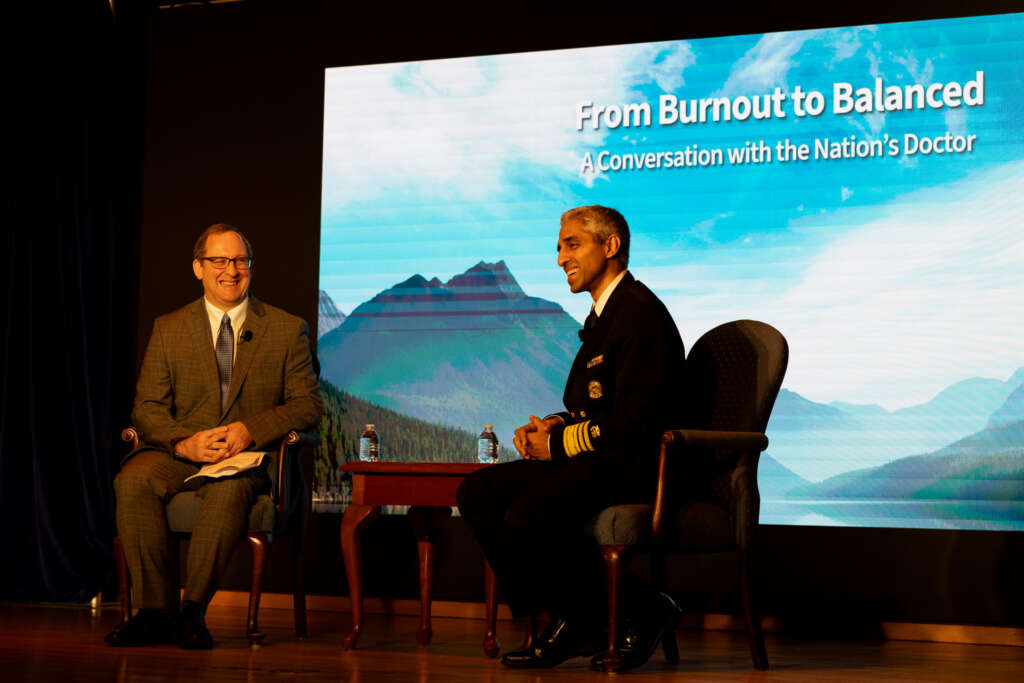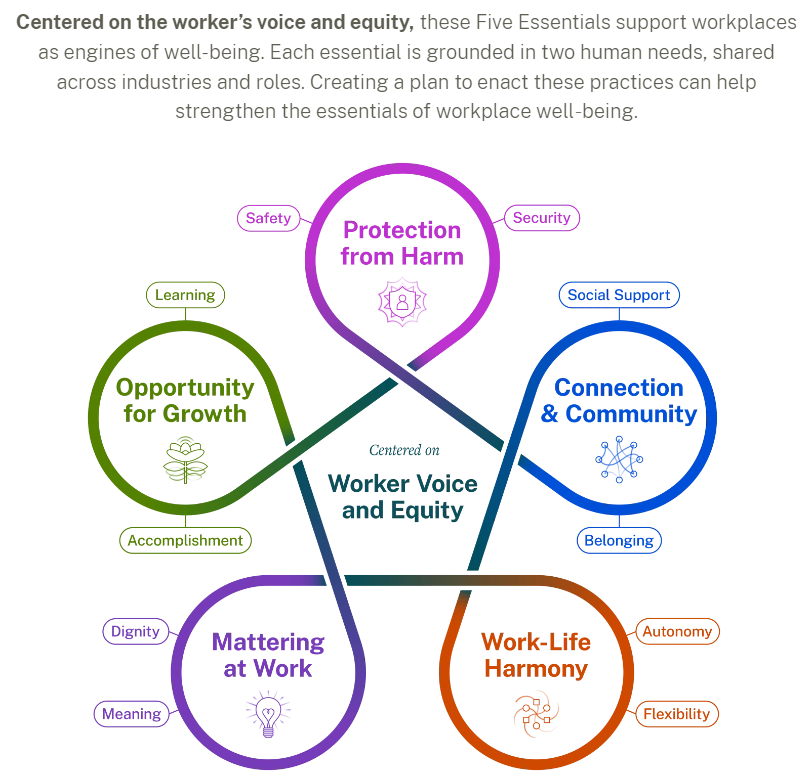Federal leaders unpack hybrid work’s link to mental health
In a hybrid work environment, federal employees' mental health and well-being have become remarkably important, said U.S. Surgeon General Vivek Murthy.
The nation’s top doctor is prescribing more attention to federal employees’ mental health and well-being.
But now in a hybrid work environment, that task has become remarkably more challenging, U.S. Surgeon General Vivek Murthy said.
“I do think that there are a lot of positives to having flexibility to be able to work from home — reduced commute times, time with family, being able to pick your kids up from school, be home for family dinner, while also not sacrificing your work,” Murthy said Thursday during a mental health and wellness event at the Office of Personnel Management. “But I think one of the things we also have to realize is that all of these choices come with trade-offs.”
One of those trade-offs, he said, is that it can become harder to build social connections among coworkers — something that’s crucial for an agency’s operations overall.
“When people feel connected to other people in the workplace, that actually positively impacts their creativity, their productivity, and ultimately contributes to their engagement and retention,” Murthy said. “Creating opportunities for people to come back in person periodically, creating more intentional opportunities for people to be able to connect and learn about one another virtually, those become increasingly important when you’re in a hybrid work environment.”
A majority of federal employees have said they highly value the flexibilities that telework allows, and that working from home improves their productivity and ability to focus on the job. Many feds have also questioned the rationale behind the rise of in-office work for employees governmentwide.
But within the administrative push to return feds to the office, agencies are trying to figure out how to make in-person hours more worthwhile. In Thursday’s conversation with Murthy, OPM Acting Director Rob Shriver said his team is looking at how to make the federal workplace more of a “magnet,” and structure office arrangements to make them more valuable to employees whose jobs may not necessarily require them to be working in person.
“It’s a pretty interesting time to be in HR, applying the lessons of how we can evolve the workplace into a place that, rather than having that negative impact on people’s health,” Shriver said. “How can we actually have it be impactful in a positive way on folks’ mental health and well-being?”

There are small steps agency managers could take to try to improve connections among coworkers. As an example, Murthy said his team does a “show and tell,” choosing one staff member during each all-hands meeting and having them share photos of their hobbies outside work.
“Connection is not about spending a lot of money and a lot of time on it. Sometimes it’s just about having a little bit of structure and a little bit of time, to give people a chance to learn about each other’s story,” Murthy said. “People started stepping out of their lanes more and helping one another because they felt a connection to them. People started hanging out more and getting lunch together because they had the foundation for a connection.”
Major stressors in recent years, like the COVID-19 pandemic and economic uncertainty, combined with burnout and staff turnover, negatively impact federal employees’ mental health in the workplace, and in turn their performance and engagement. Some agencies have taken the approach of hiring chief well-being officers, who strategize how to offer support for mental health and well-being. But ahead of those efforts, Murthy said reducing stigma around the discussion of mental health is one of the first key steps.
“To really recognize mental health is no less important than physical health is an effort for us to untangle that web that we’ve grown up with,” Murthy said. “Not only is mental health, health — but the more we can talk about it with one another, the more we can demystify it, the more we can approach it the same way we might approach a sprained ankle that we suffered over the weekend that we come into work with and share with our friends, the more I think we’ll enable people to have language to be able to seek help when they really need it.”
In 2022, Murthy’s team at the Department of Health and Human Services released a framework on mental health and well-being in the workplace, which showed how much of an impact the hybrid workplace has had on mental health and wellness. HHS’ research found significantly high numbers of employees struggling with mental health conditions, and negative impacts of the workplace on mental health. In fact, 84% of employees said their workplace conditions had contributed to at least one mental health challenge. And 81% of employees said they will be looking for workplaces that support mental health in the future.

In that framework, Murthy said HHS found “safety and security were very important, connection and community were essential in the workplace, [and] work-life harmony was critical.”
The discussion around mental health and well-being is also becoming more strongly tied to younger generations of the workforce. Many Gen Z employees and other early-career workers seek out employment opportunities that offer mental health support.
“They have expectations that their employers are going to be supportive and provide the kind of mental health services that they need,” Shriver said in an interview with Federal News Network at Thursday’s event. “Just talking to our interns about what will make this workplace the kind of workplace that they want to spend more than three months in — and making sure we’re adapting our workplaces so that they’re most conducive to people from all generations being successful in the federal government.”
OPM has also taken significant steps to try to offer more mental health resources to employees. For one, OPM is reframing the government’s traditional Employee Assistance Program (EAP) to become more comprehensive in its view of employees’ well-being.
“We have been working to rebrand that as an Employee Wellness Program,” Shriver said “That reflects a broader scope of services that are available to federal employees.”
OPM has also recently brought in a team working on the “Mindful FED” initiative and community of practice, which offers agencies help with courses in stress reduction, meditation and attentiveness, as well as leadership coaching on how to change the workplace culture to better incorporate a focus on improving employees’ mental health.
Additionally, OPM has recommended agencies encourage employees to take advantage of mental health services through that program, as well as services available through the Federal Employees Health Benefits (FEHB) program.
At OPM, Shriver said, “we often think about what employers can do to help their workforces with their mental health and well-being, and to do that in a way that is effective now in this distributed, hybrid work environment.”
Copyright © 2025 Federal News Network. All rights reserved. This website is not intended for users located within the European Economic Area.
Drew Friedman is a workforce, pay and benefits reporter for Federal News Network.
Follow @dfriedmanWFED






